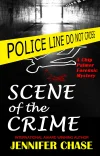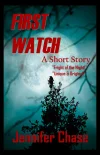Criminal homicide is divided by statute: murder in the first degree, murder in the second degree, and manslaughter. The corpus delicti (the objective proof that a crime has been committed) of homicide must include these three elements: an evidentiary showing the death of a human being, showing of a criminal agency (perpetrator), and that the criminal agency was the proximate cause of death.
These questions should be answered when you begin to plan your novel and create your outline.
What is the most interesting part of conducting a homicide investigation?
What are the basic patterns of homicide and how do they relate to the fictional story?
What was the motivation of the murder?
Who was the victim and what was their relation to the killer?
This is not only one of the important pieces of the puzzle in the criminal investigation, but it also an important aspect to writing any crime fiction. Basically, you have to know why a character(s) were murdered and why and how they committed the crime.
The best time to incorporate details into your mystery, thriller or suspense novel is to detail as much as you can about the motivations of the murderer in the book outline. Many writers/readers have asked me how long it takes for me to write a novel and if I outline my novel. My answer is yes to outlines. I always have an extensive outline for any story I’m working on. The best description of my outline would be a really basic, choppy first draft of my story.
To me, it just makes sense to have a detailed roadmap of your story, especially a crime story. That’s not to say that you can’t make changes or bring in other elements of the story as it evolves through the creative process. I can’t emphasize enough… outline… outline… outline. It will make writing your crime novel from beginning to end a real joy and you have only a minimal amount of rewrites. It will actually allow you to write faster, organize your time more efficiently, and you’ll be more satisfied with faster results.
There are eight basic behavioral patterns to homicide, in addition to some variations of each type to help with outlining your story.
Felony Murder
The death results from injuries by someone who is committing a felony, such as a robbery.
Sex & Sadism Murder
The death results from unusual violence, such as following the crime of molestation, rape, or sadistic acts.
Murder-Suicide
The death involves the killer taking his/her own life after killing another person. It’s often common in a murder-suicide “pact” of husband and wife, boyfriend and girlfriend, or even parent and child.
Random Killing
The death involves the killing of a random person. This is one of the most difficult murders to solve.
Murder for Profit
The killing of another person and the killer benefits from their death.
Revenge or Jealously Killing
The killer has a connection to the victim and kills because of revenge or jealously.
Triangle Killing
This killing is generally in association with a love triangle, such as husband, wife, and mistress.
Anger Killing
This killing is generally an extension of a crime of assault where after a dispute, anger develops.
Take the time to outline your story, delve deep into your characters and motivations, and have some fun along the way.




































Thanks for an extremely educative and interesting post! I daresay often homicides happen due to a combination of some of these factors.
LikeLike